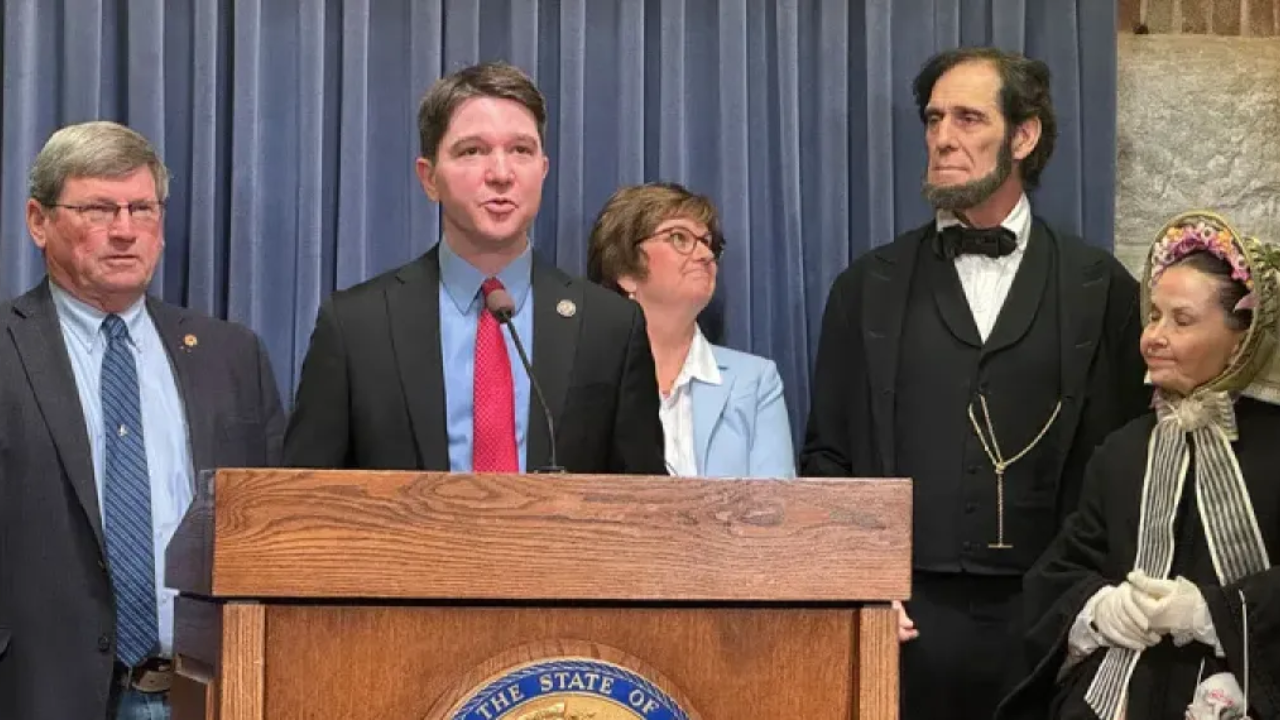Lincoln’s New Salem State Historic Site, a replica of the village where Abraham Lincoln lived in his 20s, is falling apart after years of deferred maintenance.
The site, located near Springfield, has been a popular destination for school trips and tourists.
However, roofs on several buildings are caving in, and the Carding Mill, a unique animal-powered wool-spinning machine, recently suffered a roof collapse that damaged its wheel.
Gina Gillmore-Wolter, president of the New Salem Lincoln League, warned that without urgent action, these historical structures could be lost.
The site features 23 replicas of buildings from Lincoln’s time, including homes, barns, stores, a school, and three mills.
A visitor center, outdoor theater, and hiking trails are also part of the complex.
In response to Gillmore-Wolter’s concerns, Republican state lawmakers introduced legislation to fund repairs.
Initially proposing $5 million, State Sen. Steve McClure later adjusted the request to $19 million after the Illinois Department of Natural Resources (IDNR) reported that full repairs would cost that much.
IDNR has since committed $8 million to repair the 23 village buildings and update the outdoor theater.
IDNR spokesperson Jayette Bolinski noted that the $19 million needed for New Salem is only a small part of the agency’s $1 billion backlog in maintenance projects statewide.
IDNR has spent $2.8 million at New Salem over the past eight years on projects like HVAC repairs, building new bathrooms, and reconstructing a barn. However, the lack of consistent funding has led to worsening conditions.
State Rep. Wayne Rosenthal blamed budget cuts during past administrations for the site’s decline, noting that IDNR staffing has dropped from around 2,400 employees in the 1990s to about 1,245 today.
Only seven staffers are dedicated full-time to New Salem, with one carpenter focused on smaller projects.
McClure and Rosenthal have also proposed waiving state procurement rules to speed up repairs and make it easier to hire skilled tradesmen familiar with historical construction methods.
One key repair includes fixing the Grist Mill, where a broken drive shaft has been sitting unused since 2016.
Visitor numbers at New Salem have dropped from an estimated 400,000 annually to around 360,000 in 2024, largely due to the site’s deterioration.
Gillmore-Wolter emphasized the site’s historical significance, noting that it was where Lincoln developed his leadership skills and launched his political career.
A proposed bill would also create a 13-member commission to oversee New Salem’s repairs and management.
While the bill has bipartisan support, IDNR opposes the idea, arguing that it would create unnecessary bureaucracy.
Instead, IDNR has encouraged the New Salem Lincoln League to renew a “Friends” agreement, which would outline responsibilities for site upkeep and funding.
Lincoln lived in New Salem from 1831 to 1837, working various jobs and eventually winning his first election to the Illinois House in 1834.
The site remains a key part of Illinois’ history, and lawmakers hope these efforts will preserve it for future generations.
Disclaimer- Our team has thoroughly fact-checked this article to ensure its accuracy and maintain its credibility. We are committed to providing honest and reliable content for our readers.

